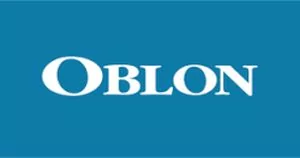On January 6, 2022, the ITC issued the public version of its opinion affirming (with modifications) ALJ David P. Shaw's initial determination ("ID") finding a violation of section 337 in Certain Chemical Mechanical Planarization Slurries and Components Thereof (Inv. No. 337-TA-1204).
By way of background, the Commission instituted this investigation on July 7, 2020 based on a complaint filed by Cabot Microelectronics Corporation of Aurora, Illinois ("CMC") alleging violations of section 337 by Respondents DuPont de Nemours, Inc. of Wilmington, Delaware; Rohm and Haas Electronic Materials CMP Inc. of Newark, Delaware; Rohm and Haas Electronic Materials CMP Asia Inc. (d/b/a Rohm and Haas Electronic Materials CMP Asia Inc., Taiwan Branch (U.S.A.)) of Taiwan; Rohm and Haas Electronic Materials Asia-Pacific Co., Ltd. of Taiwan; Rohm and Haas Electronic Materials K.K. of Japan; and Rohm and Haas Electronic Materials LLC of Marlborough, Massachusetts (collectively, "Respondents") through the importation/sale of certain chemical mechanical planarization ("CMP") slurries and components thereof by reason of infringement of one or more of claims of U.S. Patent No. 9,499,721 ("the '721 patent"). CMP slurries, in conjunction with CMP pads, are necessary for the precise leveling and polishing of the numerous metal and dielectric layers deposited on silicon wafers in advanced semiconductor devices. The accused products are Respondents' Optiplane 2300 and Optiplane 2600 product families used in the manufacture of such semiconductor devices.
On July 8, 2021, ALJ Shaw issued his ID finding a violation of section 337 based on his determination that (1) the accused products have been imported or sold for importation into the U.S.; (2) the accused products infringe the claims 1, 3-6, 10, 11, 13, 14, 18-20, 24, 26-29, 31, 35-37, and 39-44 of the '721 patent; (3) CMC satisfied the domestic industry requirement; and (4) the asserted claims of the '721 patent have not been shown to be invalid. Further, the ALJ recommended issuance of a limited exclusion order ("LEO) and cease-and-desist order ("CDO") directed to Respondents, and a bond set at 100%. See our August 11, 2021 post for more details regarding the ID.
According to the opinion, the Commission modified the ID's findings of contributory infringement to clarify that the supply of component BS-3 colloidal silica abrasive particles by foreign respondents contributes to direct infringement of the asserted composition claims by Rohm and Haas Electronic Materials CMP LLC in the U.S., but not by its customers or third-party labs. Specifically, the Commission explained that Rohm and Haas Electronic Materials CMP LLC uses the supplied particles to make the infringing slurries in the U.S. and thereby directly infringes the asserted composition claims, but Rohm and Haas Electronic Materials CMP LLC cannot be liable for contributory infringement because it supplies the completed slurry to customers and third-party labs, not a component of the infringing composition (e.g., the BS-3 particles) as required by the statute.
The Commission affirmed or took no position regarding the remainder of the ID, issued LEOs and CDOs directed to Respondents, and set the bond amount at 100%.
The content of this article is intended to provide a general guide to the subject matter. Specialist advice should be sought about your specific circumstances.


